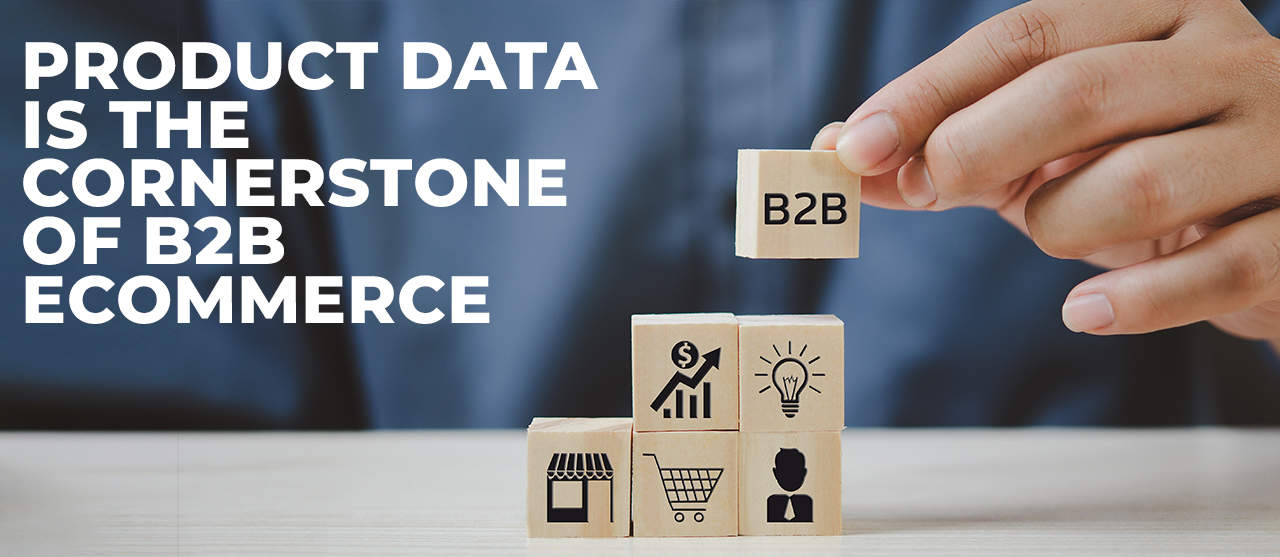
B2B brands are increasing their adoption of and investment in eCommerce and digital marketing capabilities. Based on the typical customer experience, it would appear that they are lagging behind their B2C counterparts, but that’s just one way to look at it.
One of the key reasons is that the product data, which is the cornerstone of any B2B eCommerce site, can be particularly challenging and complex. B2B brands face challenges such as managing various product catalogs, complex customer transactions, customer-specific payment modes, and customizing or configuring their products to meet unique customer needs.
Let’s explore some of the complexities of product data and how B2B companies can manage them to develop winning eCommerce capabilities.
Complexities In B2B Product Data
While B2B and B2C brands sell to different buyers, they fundamentally differ in what their customers want from their eCommerce experience. Some of these include personalization, transparency, and convenience. So how does this impact product data requirements for B2B eCommerce?
1) Product Configuration And Pricing
For B2B companies, determining the right product configuration and pricing can be complex. For instance, some B2B eCommerce products require custom-configured or made-to-order products and the right pricing based on the contract pricing and credit terms offered to the buyer.
To meet this need, B2B customer portals must efficiently pull product data from different systems and integrate them into specific made-to-order products. The goal is to enable B2B customers to purchase their desired products at the right price in a self-service fashion.
2) Personalized Products
In the age of eCommerce personalization, B2B customers seek shopping experiences that are as personalized as B2C customers. A MarTechAdvisor study found that personalized web experiences improve sales by 19%. Business customers expect personalized product catalogs with price lists and shipment options customized to their specific requirements.
Due to the growing volume of their products, B2B eCommerce companies need to address complexities like maintaining multiple versions of product catalogs and displaying them accurately in their online eCommerce platform.
3) Complex Payment Options
B2C customers typically use credit cards or other third-party digital payment methods to buy products. In the B2B space, payments are often made using a line of credit, online transfers, or raised invoices.
Adding to the complexities, payment terms can vary depending on the customer profile, order size & value, and frequency of orders. For example, repeat or high-value B2B customers expect favorable payment terms and attractive discounts, which requires efficient price segmentation based on the customer group.
4) Customer Experience (CX)
McKinsey reports that while the CX score for B2C companies ranges between 65-85%, B2B companies score lower than 50%. With thousands of products on B2B customer portals, CX in B2B is all about finding the right product quickly and easily. B2B companies need to optimize their data to ensure relevant products appear at the top of user searches across the most frequently searched keywords.
At the same time, customers want to see products relevant to their specific use cases and help them achieve their business goals. To encourage upselling and cross-selling, CX in B2B eCommerce must show relevant SKUs associated with the main product being purchased.
How do B2B companies manage these complexities and optimize their product data?
How B2B Companies Use Product Data To Win At eCommerce?
1) Personalize Your Brand
To be customer-centric, B2B companies should invest in personalizing their brand experiences. A Forrester-Bloomreach study found that just 22% of B2B customers found their eCommerce experience personalized to their needs. With the availability of AI and ML technologies, B2B brands should personalize their customer relationships to drive long-term business benefits.
Apart from using personalized emails and services like 24/7 customer support & online chat, integrating the eCommerce site with third-party tools like CRM can help capture vital customer information to simplify interactions and reduce friction in the buying process.
2) Use The Right Product Content
With thousands of B2B products to sell, content should not be about “quantity” but rather “quality.” Product descriptions are the most desired type of information for 76% of eCommerce customers when making a buying decision.
Here are some examples of high-priority “quality” product content:
- Product titles that accurately describe the product and are easy to understand
- Product attributes such as color, weight, and other technical specifications
- Search engine optimized (SEO) keywords in product titles and meta descriptions
3) Include Product Videos
86% of B2B companies use video marketing as a tool in 2021, up from just 61% in 2016. Short videos are among the more compelling types of content used by online shoppers using mobile devices to make online purchase decisions. In the B2B space, product videos help improve customer engagement by reaching them at different stages in the sales cycle.
Here are some tips for video-based marketing:
- Keep it short (around 2 minutes) and relevant to what the customer is shopping for
- Focus the video on customer needs and outcomes rather than product features
- Augment your written product content with related videos
4) Design An Online Product Catalog
A March 2020 survey found that 39% of business users prefer to self-serve (without talking to sales or customer support representatives) when interacting with B2B companies. Both B2B and B2C customers are comfortable searching for online product information without assistance.
Having a complete online product catalog can provide all the information they seek. Here are some tips for designing product catalogs:
- Include complete product information in the catalog to build customer trust
- Design your eCommerce search functionality to make it easier to navigate the complete product catalog
- Include high-quality visuals like “how to use” videos and images to engage users as they navigate your website
5) Create Accurate And Informative Product Descriptions
Product information is a tool that can help attract shoppers and boost conversions.
A survey found that 89% of respondents say product information is essential when deciding whether to purchase an item. It helps inform them of a product’s use and how it could benefit them. Remember, they cannot see or touch the product as they would if they were browsing at a physical store, so you must create a similar experience for them online.
When you focus on ensuring your product descriptions have valuable information they need, such as its benefits, materials used, weight, dimensions, and any other helpful information and specifications, you give shoppers all the information they need to make a purchase.
A helpful tip is to take note of your incoming queries so you can tweak your product descriptions to answer those questions. This can further enrich your product descriptions to answer questions that may have hindered a sale.
6) Make Product Visibility On Various Platforms Achievable
According to studies, only 25% of internet users go to the second page of search results. If you aren’t on the first page, you lose out on 75% of potential customers. This means;
- Having high-quality multimedia, such as videos and images
- Have no errors on your product pages
- Using relevant keywords on page titles and product descriptions
- Having the correct search terms for a specific search engine
Conclusion
In the competitive B2B eCommerce space, quality product data can be the difference between success and failure. With thousands of B2B products to choose from, business customers are looking for a personalized online experience with B2B retailers and brands.
With its comprehensive product data management services, EnFuse Solutions is partnering with growing B2B companies to elevate their eCommerce offerings. To see how we can help you succeed, connect with us today.
We are excited to be a sponsor of this year’s B2B Online – Chicago conference, and we look forward to moderating the panel discussion on Strengthening your Digital Shelf (PIM) Strategy To Engage And Convert Customers, where our experts will share their insights on the latest trends and strategies in our industry.

















Comment